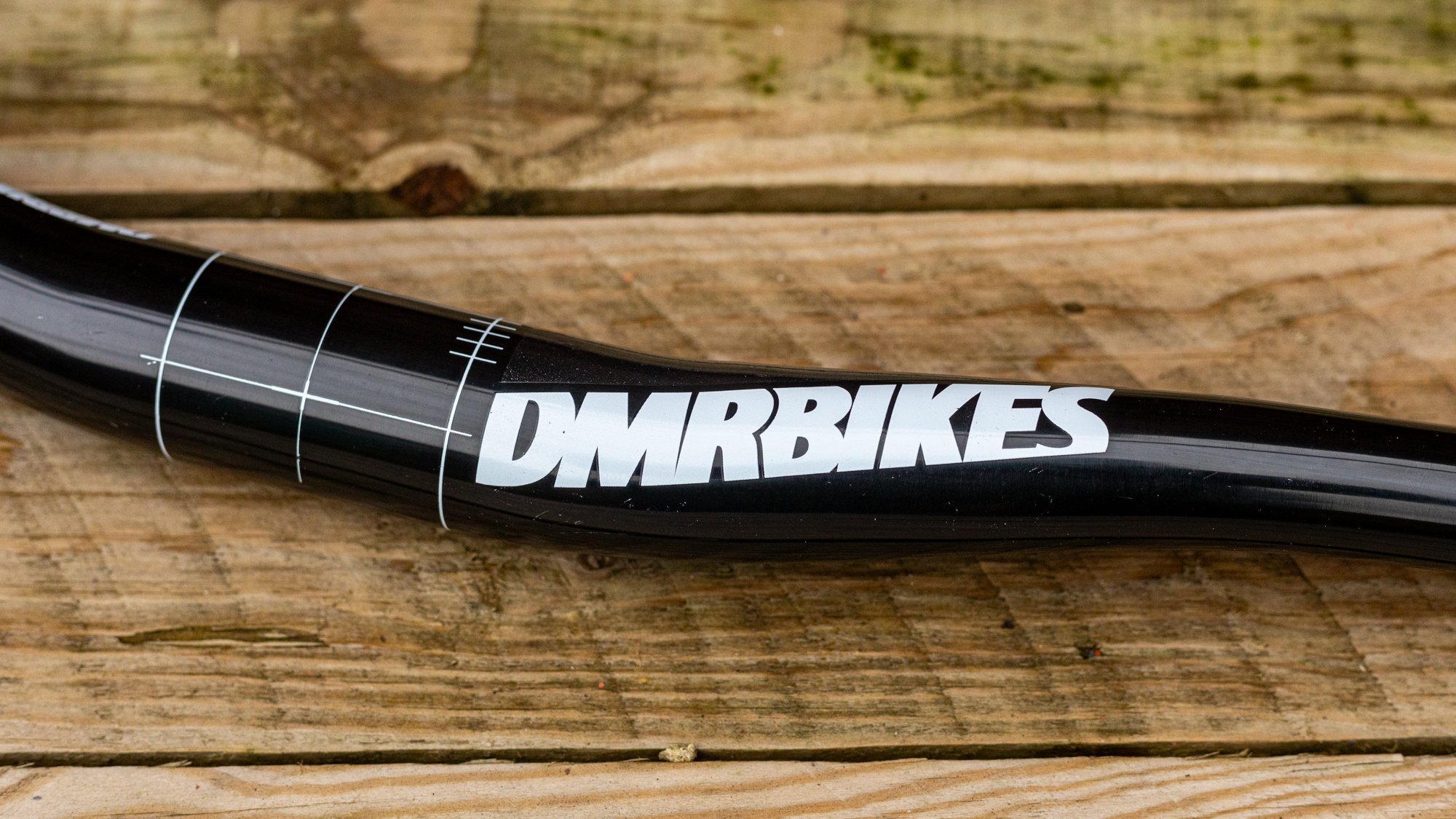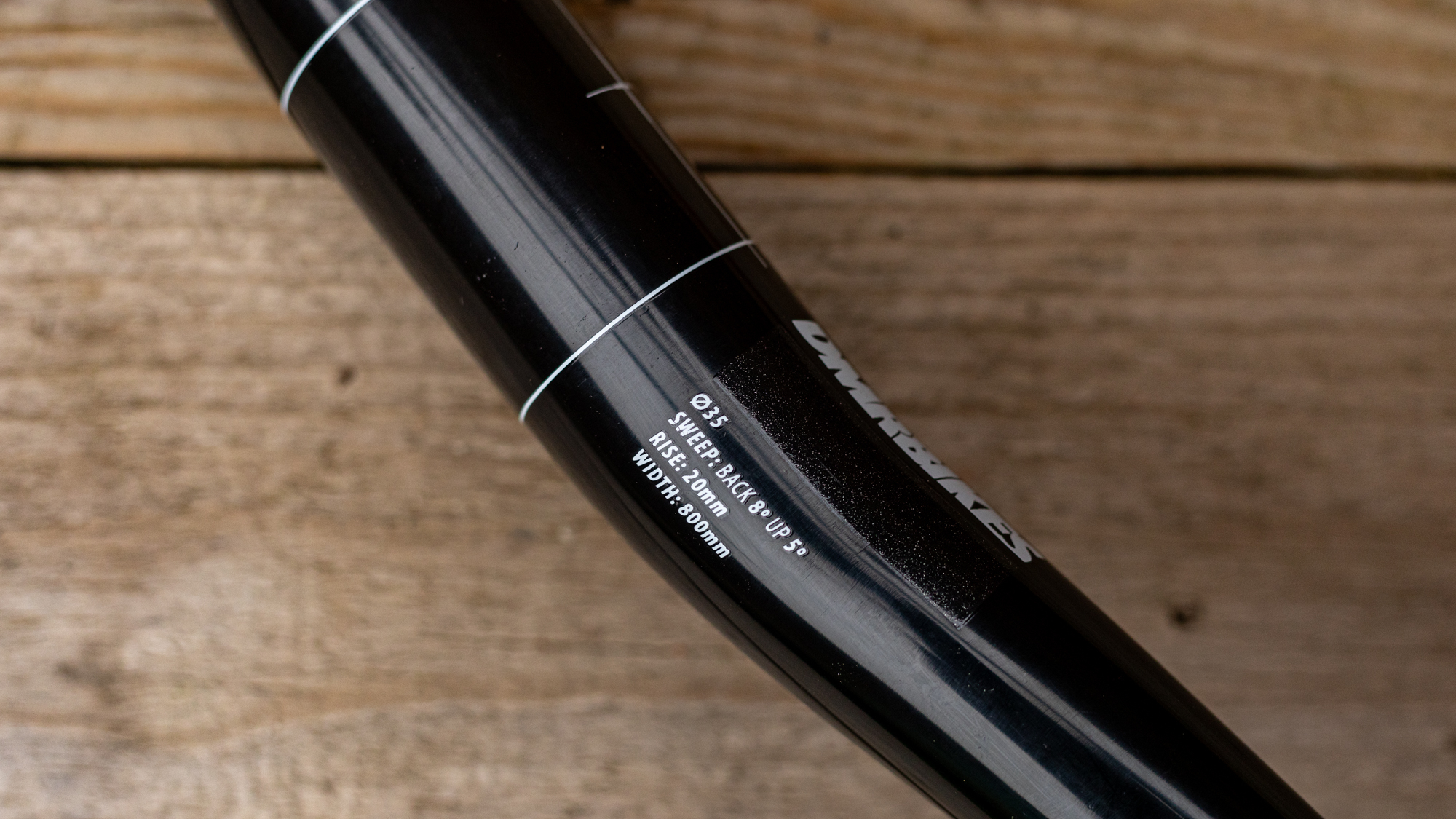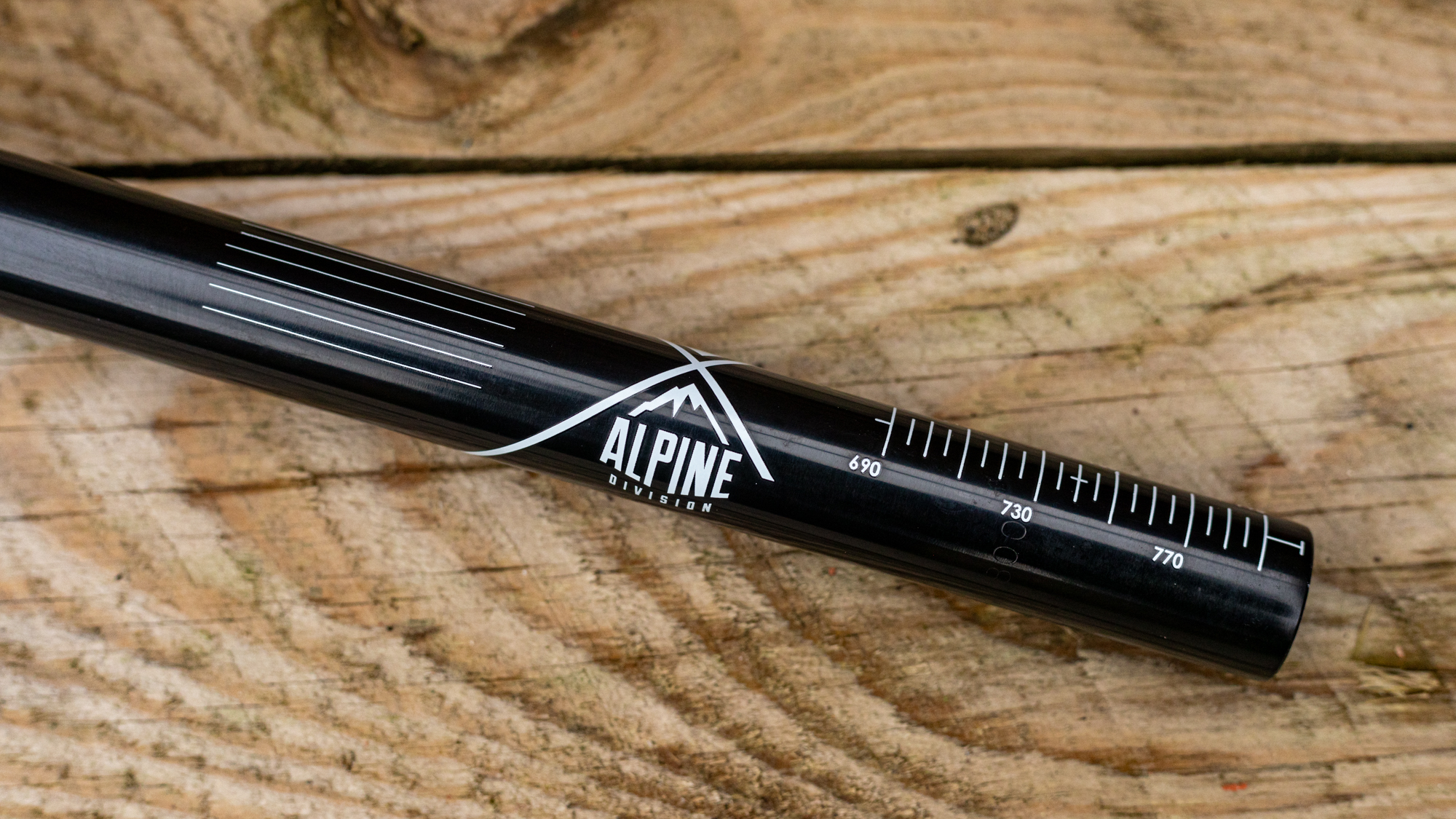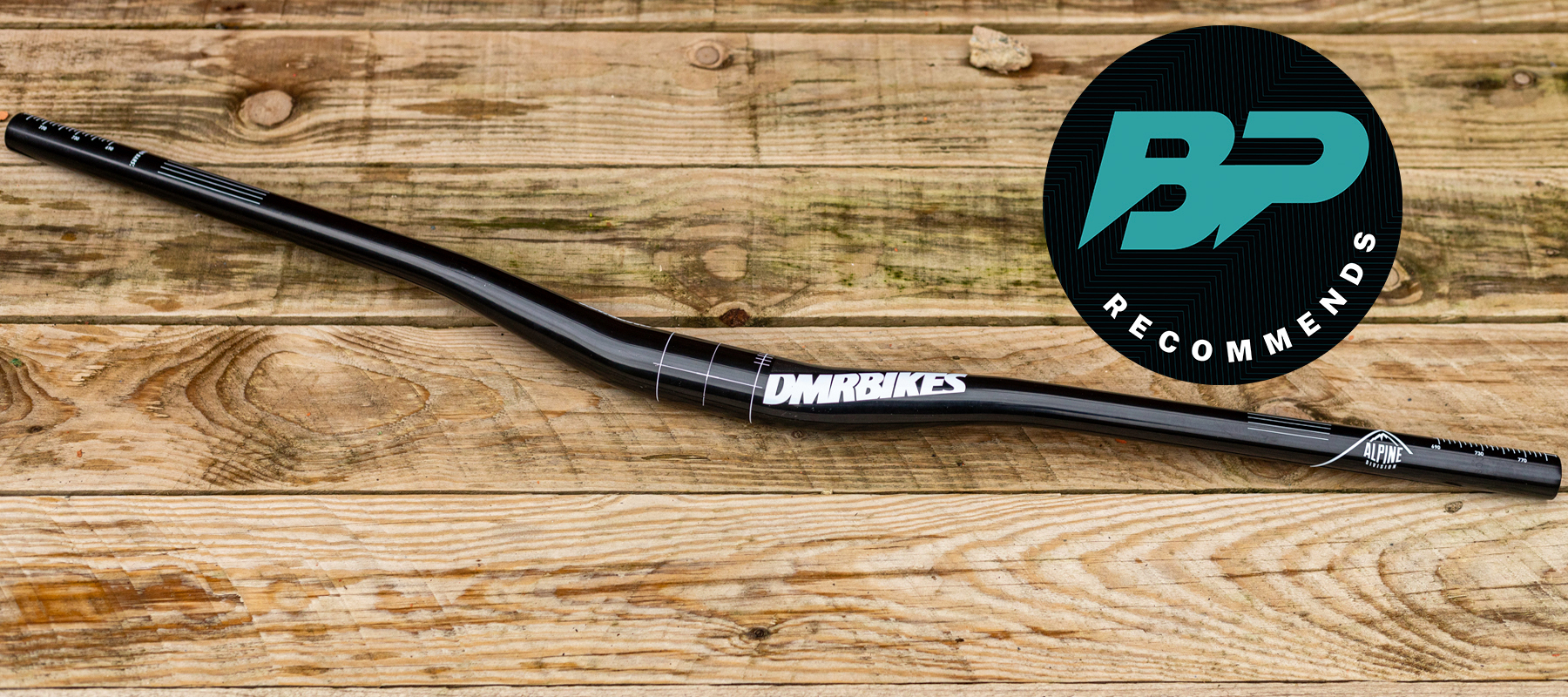Bike Perfect Verdict
DMR’s Wingbar is a solid, reliable handlebar with a neutral sweep and shape for a good price.
Pros
- +
Reasonable price
- +
Natural shape and enough upsweep to not feel droopy
- +
Stiff and responsive in 35mm clamp size
- +
Proven tough
- +
Full 800mm width with saw marks and two height options
Cons
- -
Stiffer than some in 35mm clamp size
- -
Not as light as some equivalents
- -
Higher price in US and EU
Why trust BikePerfect
Currently sponsoring leading UK riders like Brendan Fairclough and Olly Wilkins, DMR originally started out making 4X and jump bike frames in the ‘90s. For full disclosure, Damian Mason (who started DMR) used to give me a few parts when I was half decent at 4X over twenty years ago, but not being the kind of rider who gets gear for free for long, I can barely remember and I hardly think that makes me biassed.
Still, the experience did give me a warm feeling for DMR and a sense of the brand thinking about what it was doing with products from the off – rather than just buying generic Far East gear. Designing all its kit meant eventually branching out into pedals, tires and other components like these handlebars, and the brand has now been going strong for a quarter of a century. It must be doing plenty right too, as it’s built a great reputation for affordability and durability.
DMR’s aluminum V-series (and later Vault) pedals are some of the most successful mountain bike products of the recent era, and this Wingbar brings the same aluminum and design knowhow to a solid and stiff riser bar.

Design and specifications
The skinnier 31.8mm bar bore Wingbar has been around years, and more recently offered up in this latest MK4 version with 35mm clamp size too.
There is no official claim about exactly how much stiffer the fatter bar is, but Olly Wilkins says, "I love the extra stiffness the Wingbar35 brings to the table. For those who enjoy a bit of extra flex, the Wingbar is available in 31.8 clamp size, but I’m a 35 guy.”
Clocking in at 320g, which isn’t the lightest in its category, the MK4 35mm comes in full 800mm width, whereas the 31.8mm comes in 780mm. Both bars offer cut marks to saw narrower to a preferred width, and if you want something higher rise, Olly also has his own signature ODUB bars I’ll be reviewing shortly, which offer more height options up to 50mm and a special construction technique.
Wingbar 4 has useful marks and lines around the stem clamp to set bar roll and position accurately, and is drawn from heat-treated 7075 aluminum alloy, which is the same series as many rival bars like Race Face and Renthal.
A quick WiKi explains 7075 as using zinc as the primary alloying material, as well as some magnesium and other metals to get the desired properties. "The blend was first developed in Japan for building aircraft and subsequently re-engineered by an American company Alcoa after examining a captured Japanese plane in WWII. It has high fatigue life and good ductility and became standard material for aerospace and aviation uses". Or, obviously in this instance, mountain bike handlebars and components.

Performance
Because they look fatter and stronger to begin with, a common perception of oversized bars is that they are always stiffer. In reality though, many brands tune larger diameter 35mm bars to similar levels of flex and compliance as 31.8mm offerings, or even explicitly make them more comfortable like OneUp or PNW.
DMR, on the other hand, uses the two diameters to offer different flex profiles and ride qualities, with its 35mm bar making a statement of being a bit stiffer and more solid than the thinner option.
Before I go on with you thinking the 35mm Wingbar will jackhammer arms into Reynauld’s syndrome like a road digger manning a Tarmac whacker plate, let’s be clear; this 35mm bar isn’t especially stiff or uncomfortable, just marginally the stiffer of two DMR options.
There’s a solid and direct feel to the steering leaning on the edges of grips and twisting the bike through rocky lumpy sections, but not to the point it’s uncomfortable or feeds back too much trail buzz like some really cheap alloy bars you get on complete builds. Another bonus with the Wingbar is that despite feeling pretty sturdy, there’s no excessive twanginess or that tight springy feeling you experience sometimes on (often carbon) bars that are simply too stiff.
Olly Wilkins reckons, "that fat clamp definitely makes me feel safer when over shooting a big jump." And while not all of us are going to be hitting massive jumps like him, the precise steering response is a side benefit for everyone and bigger riders will appreciate how there’s minimal flex and bend, even right at the tips.
With 5-degree upsweep, bar tips don’t feel ‘saggy’ either or like outer edges of palms tilt away from the inside of wrists like some, and DMR’s curves feel like there’s marginally more backsweep than the 8 degree advertised to me. This might be a consequence of the upsweep mentioned and how that interacts with bar roll (whether you run your handlebar slightly clocked forwards or backwards in the stem), but either way, it’s easy to get a natural hand position and wrist angle.
In terms of looks, DMR’s finish and glossy white graphics are tidy and long-lasting, but I did find the glossy finish on the bar scuffs up and dulls a bit easier than shot-peened surfaces some bars use.

Verdict
DMR’s Wingbar MK4 doesn’t attempt to reinvent the wheel, but is simply a well proven, non-nonsense MTB handlebar with a neutral shape that gets on with it for a fair price.
Yes, it’s marginally heavier than some rivals, but we’re only talking a few grams, so that’s not really an issue, and overall it represents excellent value (in the UK at least) for a proven tough and durable aluminum bar that is imperceptible from pricier options.
Tech specs: DMR Wingbar MK4
- Price: $90.00 / £65.00 / €99.99
- Weight: 320g actual (800mm/35mm)
- Width: 780mm/31.8mm, or 800mm/35mm
- Rise: 20mm (tested), 35mm
- Geometry: 5-degree up, 8-degree backsweep
- Rival Products: Renthal Fatbar, Chromag OSX

An ex-elite downhill racer, Mick's been mucking about and occasionally racing mountain bikes for over twenty years. Racing led to photo modelling and testing kit for magazines back in the day, and, nowadays, he's mostly riding enduro-style terrain on conventional and electric bikes. As curious as ever about products and tech, he's as likely to be on the other side of the lens or computer screen rating, reviewing and shooting all the latest gear. Mick's list of regular clients includes Bike Perfect, MBR, MBUK, and most of the leading UK MTB publications at one point or another.

